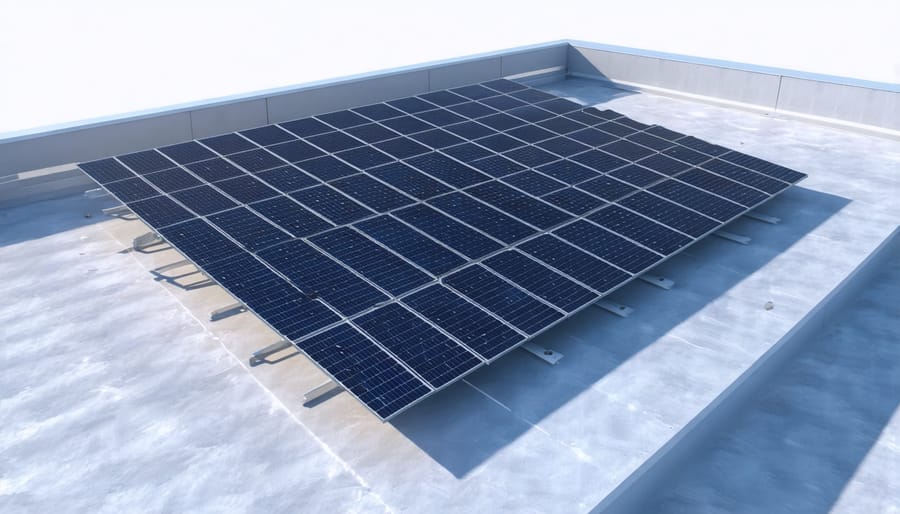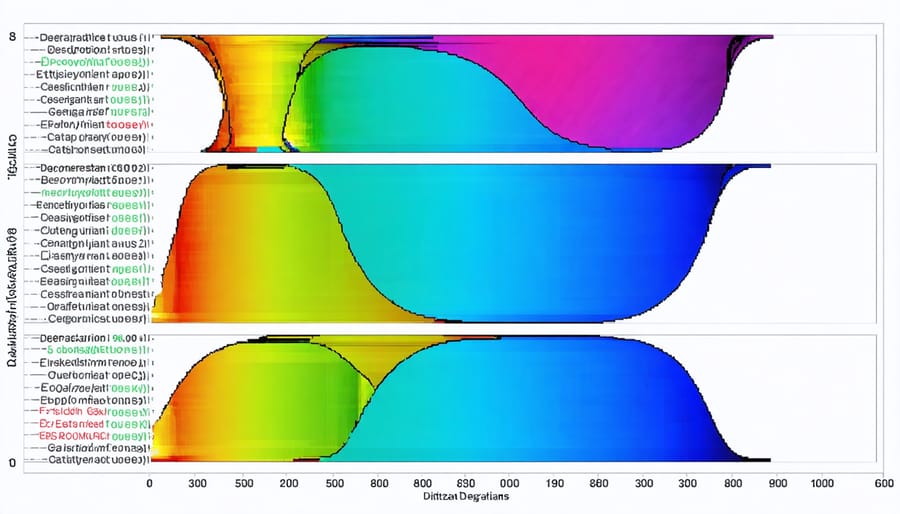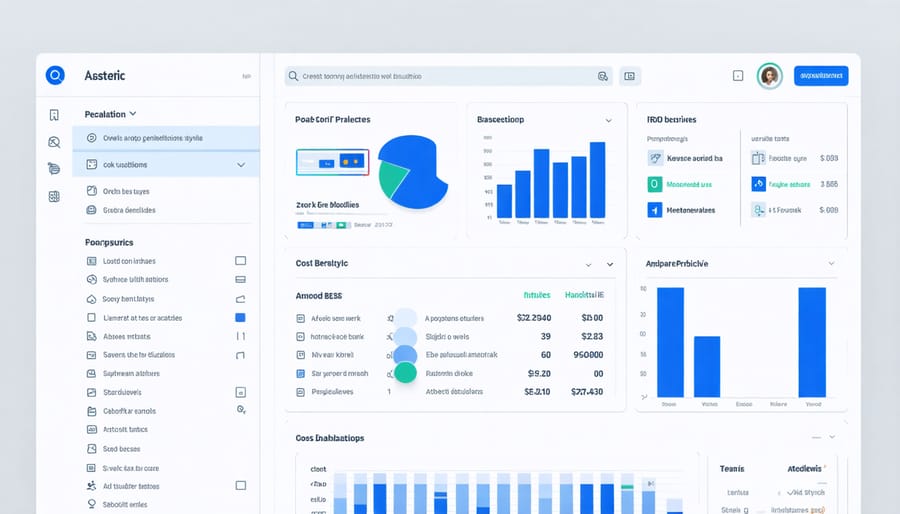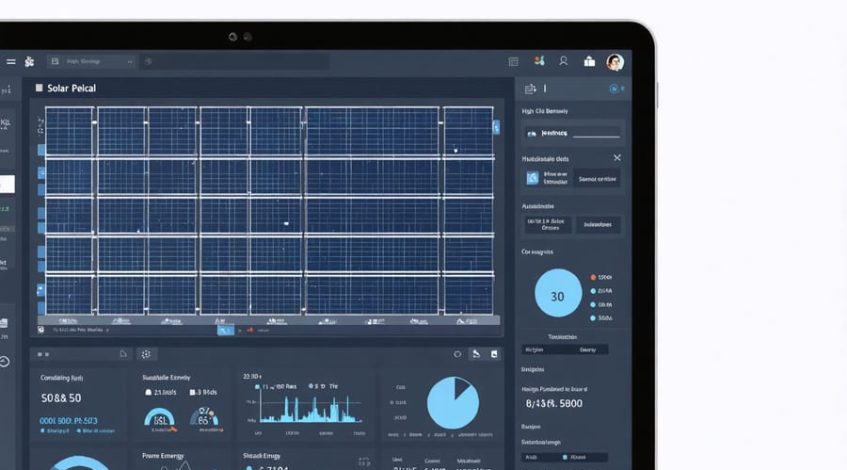Choosing the right solar design comparison tool transforms complex panel specifications into actionable investment decisions. Modern solar analysis platforms now evaluate panel efficiency, ROI calculations, and installation configurations with unprecedented precision – enabling facility managers to optimize their renewable energy investments with confidence. Leading design tools like Aurora, Helioscope, and PVsyst have revolutionized how organizations compare solar technologies, offering detailed performance simulations across diverse environmental conditions and mounting configurations. By leveraging these advanced comparison capabilities, businesses can now predict energy generation, analyze shading impacts, and calculate financial returns before committing to specific panel technologies.
This data-driven approach streamlines the evaluation process while reducing investment risk through accurate performance modeling. For facility managers and business leaders exploring solar adoption, these tools provide the analytical foundation needed to select panels that maximize both sustainability goals and bottom-line benefits. The latest generation of solar design platforms integrates real-time pricing, local incentive programs, and utility rate structures to deliver comprehensive analysis that drives informed decision-making in renewable energy investments.
Key Features of Modern Solar Design Tools
3D Modeling and Shade Analysis
Modern solar design tools offer sophisticated 3D modeling capabilities that transform how businesses evaluate solar installations. These advanced visualization features allow users to create detailed virtual representations of buildings and surrounding landscapes, ensuring optimal panel placement and system design.
The shade analysis component is particularly crucial, as it directly impacts system performance and ROI. Leading tools employ high-resolution aerial imagery and LiDAR data to identify potential obstacles such as trees, neighboring structures, and architectural features that could cast shadows on panels throughout the day and seasons.
Users can simulate sun paths and shadow patterns across different times and seasons, providing accurate predictions of energy production considering shade impacts. This detailed analysis helps prevent performance issues before installation and enables more precise financial forecasting.
Some platforms even integrate machine learning algorithms to enhance accuracy, analyzing factors like vegetation growth patterns and seasonal variations. This comprehensive approach to shade analysis has proven invaluable for projects like the Denver International Airport solar installation, where complex building structures required precise panel positioning to maximize energy generation.
Energy Production Simulation
Modern solar design tools incorporate sophisticated energy production simulation capabilities that enable accurate forecasting of system performance. These tools utilize historical weather data, solar irradiance patterns, and advanced algorithms to predict energy generation across different seasons and conditions. Users can model various panel configurations, considering factors such as tilt angles, orientation, and shading impacts to optimize system layout.
Leading simulation platforms offer detailed hourly and monthly production estimates, helping stakeholders make data-driven decisions. They account for site-specific factors including temperature coefficients, system losses, and degradation rates to provide realistic performance projections. Many tools also integrate with utility rate structures to calculate expected financial returns and payback periods.
For enhanced accuracy, these simulators factor in equipment specifications from different manufacturers, allowing users to compare actual performance characteristics rather than relying on theoretical maximums. Real-time monitoring capabilities enable validation of simulated predictions against actual production data, helping refine future projections and identify potential system optimization opportunities. This comprehensive approach to production modeling significantly reduces investment risk and supports strategic planning for solar implementations.
Performance Metrics That Matter
Efficiency Ratings
Solar panel efficiency ratings serve as crucial metrics that determine how effectively a panel converts sunlight into usable electricity. Modern solar panels typically achieve efficiency ratings between 15% and 23%, with premium models reaching up to 25%. These percentages represent the portion of solar energy that successfully converts to electrical power under standardized test conditions.
When comparing panels through design tools, efficiency ratings should be evaluated alongside other performance indicators. A panel with 20% efficiency in a compact form factor might outperform a larger 17% efficient panel in space-constrained installations. Design tools often display these metrics through power density calculations, measured in watts per square meter, providing a practical assessment of real-world performance.
Temperature coefficients also impact efficiency ratings, typically reducing performance by 0.3% to 0.5% for every degree Celsius above standard testing conditions (25°C). Advanced design tools factor in local climate data to provide more accurate efficiency projections based on actual operating conditions.
It’s important to note that while higher efficiency ratings often correlate with premium pricing, they can justify the investment through increased energy production per square foot and reduced installation costs. Design tools help quantify these trade-offs by calculating long-term energy yields and financial returns based on efficiency ratings and local environmental factors.

Degradation Rates and Lifetime Value
Modern solar design tools incorporate sophisticated lifecycle analysis tools that calculate degradation rates and long-term value projections for different panel options. Most premium solar panels demonstrate an annual degradation rate of 0.3% to 0.5%, while standard panels typically degrade at 0.7% to 1% per year. These seemingly small differences can significantly impact energy production and ROI over a 25-30 year period.
When comparing panels through design software, focus on the performance ratio (PR) and power warranty terms. Premium manufacturers often guarantee 90% production capacity at year 10 and 80% at year 25, providing greater confidence in long-term investments. The tools calculate Net Present Value (NPV) and Internal Rate of Return (IRR) based on these degradation metrics, local energy costs, and installation expenses.
For example, a 500kW commercial installation using high-efficiency panels with a 0.3% degradation rate could generate $50,000 more in energy savings over 25 years compared to standard panels with 0.7% degradation. Leading design platforms now feature predictive analytics that account for climate conditions, shading patterns, and maintenance schedules to provide more accurate lifetime value calculations, enabling stakeholders to make data-driven decisions aligned with their long-term sustainability goals.
Environmental Impact Assessment Tools
Carbon Footprint Analysis
Modern solar design tools incorporate sophisticated carbon footprint analysis features, enabling organizations to assess the environmental impact of their solar installations comprehensively. These tools integrate environmental impact tracking throughout the entire panel lifecycle, from manufacturing to end-of-life disposal.
Leading platforms calculate embodied carbon emissions during production, transportation, and installation phases while projecting offset potential through clean energy generation. Users can compare different panels based on their carbon payback periods, which typically range from 1-4 years depending on the manufacturing process and installation location.
Advanced analysis tools factor in regional grid carbon intensity, allowing organizations to quantify emissions reduction more accurately. Many platforms now include lifecycle assessment (LCA) capabilities, measuring environmental impacts across multiple categories including water usage, resource depletion, and waste generation.
These tools also help organizations meet sustainability reporting requirements by generating detailed environmental performance reports. Some advanced solutions even incorporate predictive modeling to estimate future carbon savings based on panel degradation rates and projected energy production, enabling more informed decision-making for long-term sustainability planning.

Material Sustainability Scoring
Modern solar design tools incorporate comprehensive material sustainability scoring, enabling decision-makers to evaluate the environmental impact of different panel options. These scoring systems typically assess factors such as raw material sourcing, manufacturing processes, and end-of-life recyclability. Leading manufacturers now emphasize sustainable panel design through reduced toxic materials, improved recycling potential, and lower carbon footprint during production.
Key sustainability metrics include the Energy Payback Time (EPBT), which measures how long a panel must operate to offset its manufacturing energy consumption, and the Material Circularity Index (MCI), which evaluates the potential for component recycling. Advanced design tools now feature lifecycle assessment capabilities that calculate environmental impact scores based on these factors.
Notable sustainability criteria include:
– Silicon sourcing and purification methods
– Frame material selection and recyclability
– Glass-to-frame ratios for optimal material usage
– Hazardous material content reduction
– Manufacturing energy efficiency
– Transportation impact considerations
– End-of-life management solutions
By incorporating these sustainability metrics into the panel selection process, organizations can make environmentally responsible choices while maintaining performance requirements and cost objectives.
Cost-Benefit Analysis Features
Modern solar design tools offer sophisticated cost-benefit analysis features that enable organizations to make data-driven decisions about their solar investments. These platforms incorporate multiple financial metrics, including initial installation costs, operational expenses, and potential financial incentives for solar installation to provide comprehensive economic assessments.
The financial modeling capabilities typically include ROI calculations, payback period analysis, and net present value (NPV) projections. Users can input specific parameters such as electricity rates, consumption patterns, and maintenance costs to generate customized financial forecasts. Advanced tools also factor in degradation rates, warranty periods, and replacement costs to present a complete lifecycle cost analysis.
Most platforms feature comparative analysis tools that allow users to evaluate different panel options side by side. These comparisons typically include:
– Initial investment requirements
– Energy production potential
– Annual cost savings
– Long-term maintenance expenses
– Performance warranties
– Expected system lifespan
– Carbon offset values
The best tools also incorporate sensitivity analysis features, allowing users to adjust variables such as energy prices, consumption patterns, and weather conditions to understand how different scenarios might affect their investment returns. This helps organizations make more informed decisions by considering multiple potential outcomes.
Real-time monitoring and reporting capabilities enable users to track actual performance against projected benefits, helping validate initial assessments and adjust forecasts as needed. Some platforms also integrate with utility billing systems to provide accurate cost-saving calculations based on current tariff structures and peak demand charges.
These analytical features help organizations optimize their solar investments by identifying the most cost-effective panel configurations and installation strategies for their specific needs and circumstances.

Selecting the right solar design tool is crucial for optimizing your solar investment and ensuring maximum system performance. Consider tools that offer comprehensive panel comparison features, accurate energy production forecasting, and detailed financial analysis capabilities. Focus on platforms that provide regular updates to their panel databases and maintain current pricing information. For most business applications, we recommend choosing tools that balance sophisticated analytical capabilities with user-friendly interfaces. Prioritize solutions offering robust customer support and training resources, as these will prove invaluable during implementation. Remember to evaluate your specific needs, budget constraints, and technical expertise when making the final decision. By carefully weighing these factors and utilizing the comparison insights provided in this guide, you can select a solar design tool that best serves your organization’s sustainability goals and financial objectives.

